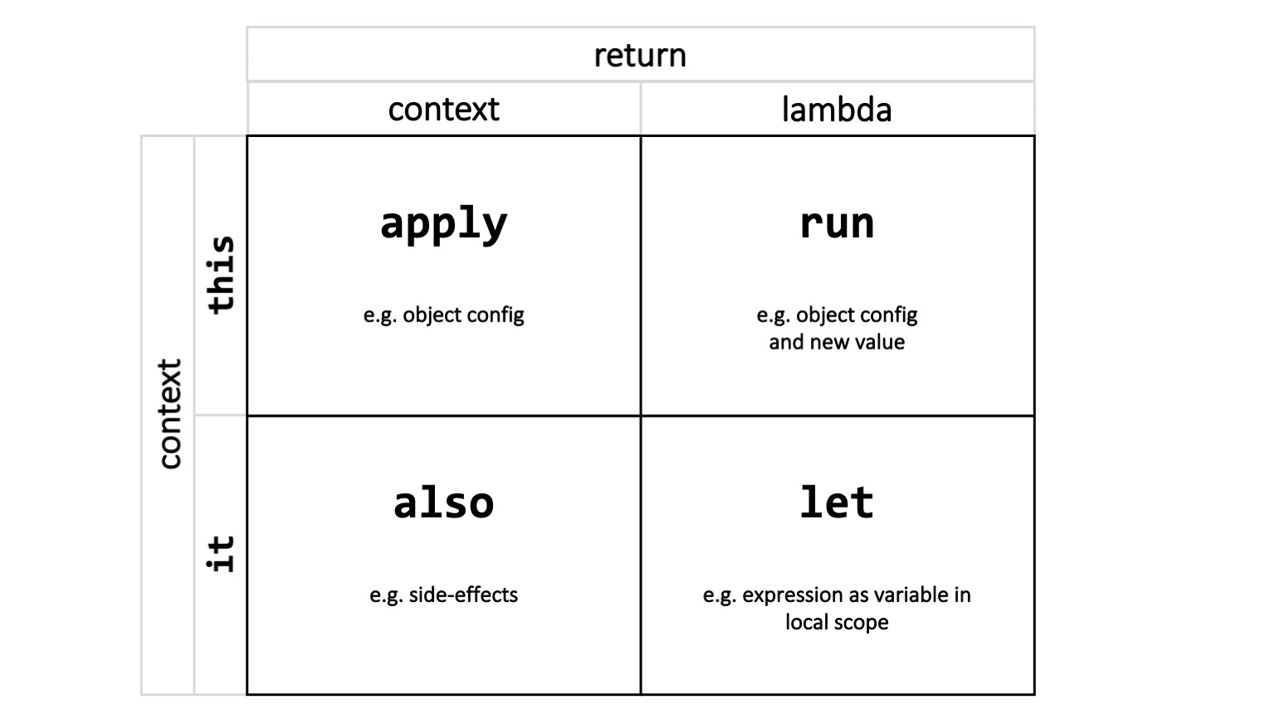Kotlin scope functions
Kotlin scope functions allow the execution of code blocks in a richer scope, typically with the end goal of making code simpler to write and read.
There are five different scope functions: let, also, with, apply, and run.
They all receive an object and a code block that will have access to that object.
The with function is the only one that receives the object as a regular parameter.
That leaves us with four remaining functions, which can be neatly organized in a two by two table, according to the two differentiating aspects:
-
How is the object made available to the block - via
thisor via the lambda’s parameter. -
What is the scope function’s evaluation result - the received object or the block’s evaluation result.

For instance, apply provides the context object via this and evaluates to the context object.
This means that the following expression’s evaluation
someObject.apply {
someMethod()
}
- Calls
someMethodonsomeObject(thisis used implicitly). - Evaluates to
someObject.
The table above can be used to select the most appropriate scope function for a given use case. Just answer these two questions and use them to select the table’s column and row, respectively:
- To what should the overall expression evaluate (i.e. is the action result needed or not)?
- How should the context object be made available inside the block? Typically, when calling methods on the context object the most ergonomic way is via
this.
Finally, in addition to the previous five scope functions, there is also a run overload that doesn’t receive any object and essentially allows a block to be used as an expression.